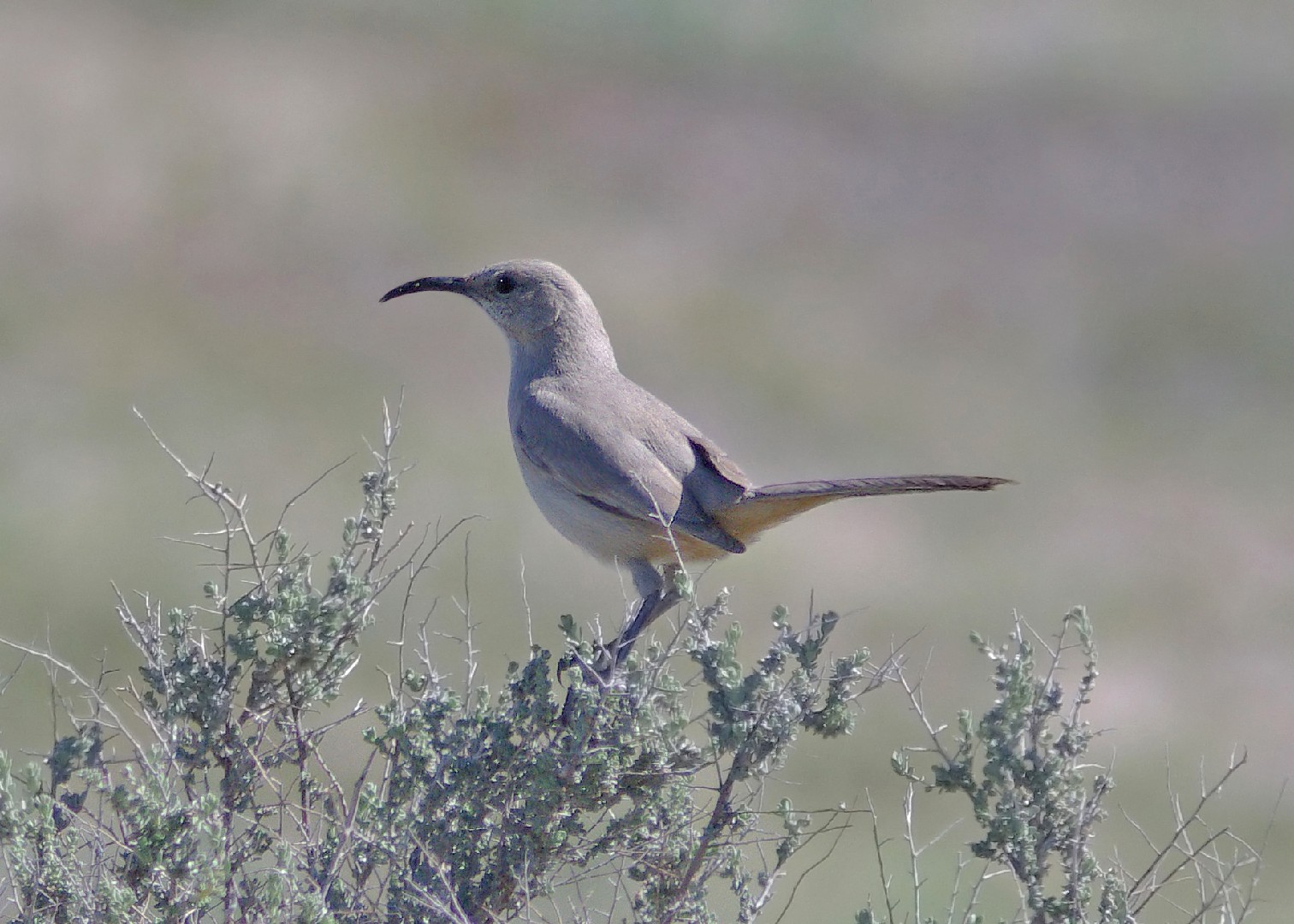Leconte's Thrasher
A species of American Thrashers Scientific name : Toxostoma lecontei Genus : American Thrashers
Leconte's Thrasher, A species of American Thrashers
Botanical name: Toxostoma lecontei
Genus: American Thrashers
Content
Description General Info
Description
LeConte's thrasher weighs from 55 to 75 g (1.9 to 2.6 oz) and are 24.5–29 cm (9.6–11.4 in), and there is no sexual dimorphism within the species. Their wings are typical of birds that are sedentary, as they are short and rounded. There are noted differences among the subspecies. The crown, back, shoulders, and rump of T.c. lecontei possess a sandy pale-gray color. The primaries and secondaries are grayish brown. The rectrices are of a darker gray brown that contrasts with the plumage. Lores and ear-coverts are a mottled gray brown. The throat is an off-whitish color of a darker stripe. The chest and belly is puffy gray, and the vent and uppertail coverts are of a warmer tint in contrast to the palish chest and belly. The underwing is both gray and buff, with a brown-chestnut iris, a black-sickle shaped bill, and legs that are nearly black. T.l. arenicola has a darker chest and underparts and a shorter tail. In its juvenile stages, the thrasher is darker brown, and its feathers looser and fluffy in appearance, especially on the vent. 
Size
25-28 cm (10-11 in)
Life Expectancy
5.7-6 years
Nest Placement
Shrub
Clutch Size
2 - 5 eggs
Feeding Habits
Leconte's Thrasher are omnivores, eating insects, arthropods, and plant matter. They forage by excavating pits and flipping debris for prey like beetles, scorpions, spiders, and small vertebrates, and also pick off insects from vegetation. Seeds and occasional berries supplement their diet.
Habitat
Leconte's Thrasher can typically be found in arid desert landscapes characterized by sparse vegetation. These birds prefer low-altitude, harsh climates with extreme temperatures, favoring regions where saltbush, shadscale, cholla cactus, creosote, yucca, mesquite, and ocotillo plants are present, though not dense. The species is well-suited to flat or undulating terrains, such as desert flats, dunes, and alluvial fans, but tends to avoid steep canyon areas, instead settling in minor arroyos and expanses with infrequent rainfall and scarcity of streams.
Nest Behavior
Both leconte's Thrasher parents construct the nest, sometimes reusing old ones. Nesting includes creating a multi-layered structure that supports egg-laying and provides comfort for hatchlings. Parental care involves both the male and female in egg incubation and feeding the young.
Nest Characteristics
Leconte's Thrasher's nest is typically hidden within cholla cactus or desert shrub, about 3 feet off the ground. It's built from sticks, twigs, grasses, rootlets, and finer materials like plant seeds and occasionally human-made fibers. The inner cup measures around 3.5 inches across and 3.1 inches deep.
Dite type
Insectivorous
General Info
Feeding Habits
Bird food type
Bird Feeder Type

Ground

Platform
Behavior
Leconte's Thrasher is a bird recognized for its distinctive interaction with desert environments, where it typically resides. These birds start their breeding season in the cooler months, with males exhibiting territorial behavior by singing from prominent perches. Their courtship displays are unique, featuring distinct movements such as bowing and pecking at the ground, as well as vocal communication between mates. Once paired, leconte's Thrasher exhibit social monogamy, often remaining together across seasons. Both sexes share responsibilities in raising their chicks, though their parental care and offspring dispersal patterns demand further research. Notably sedentary, leconte's Thrasher do not partake in long-distance migrations but may occasionally appear outside their breeding grounds.
Species Status
Not globally threatened.
Scientific Classification
Phylum
Chordates Class
Birds Order
Perching birds Family
Mimids Genus
American Thrashers Species
Leconte's Thrasher 